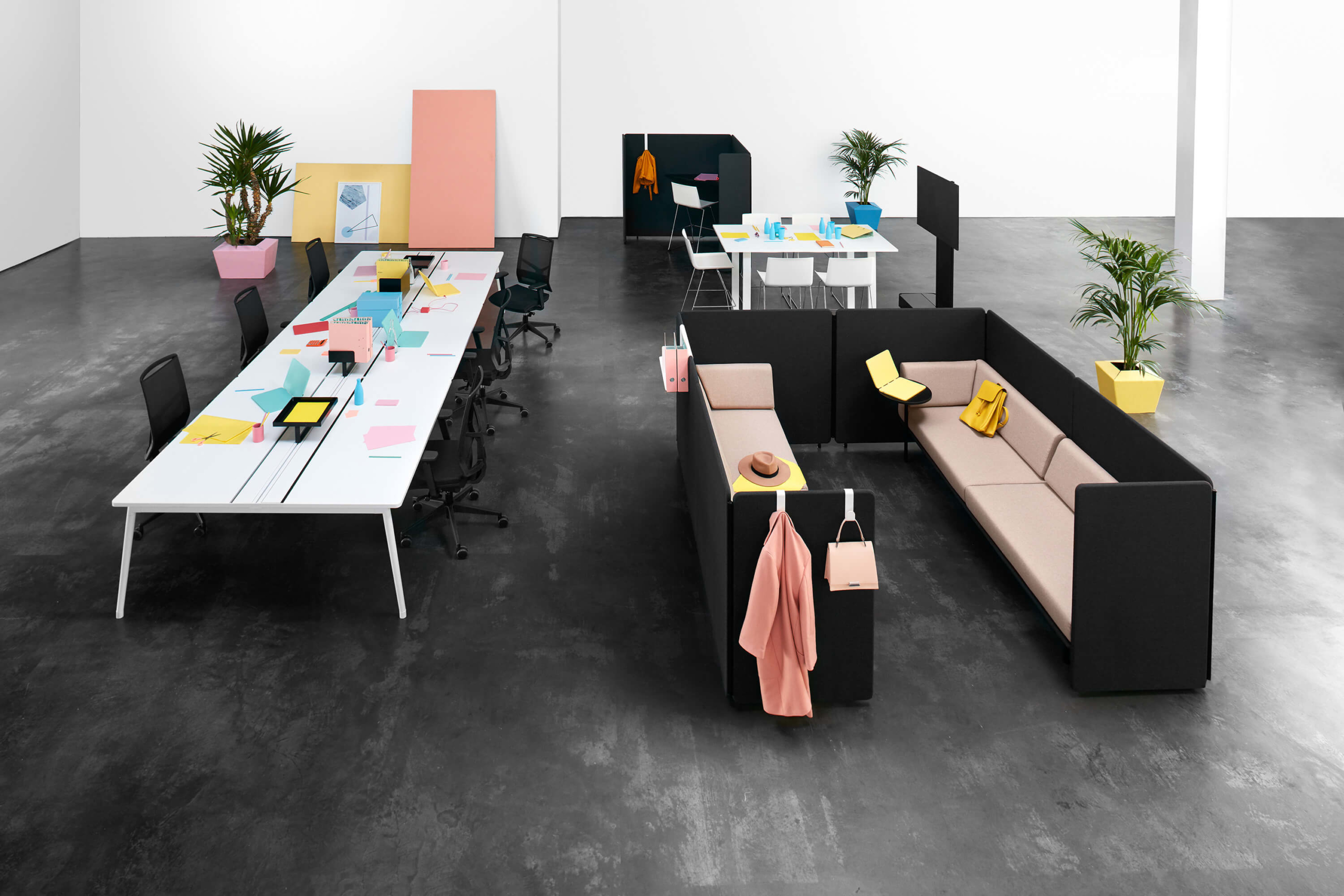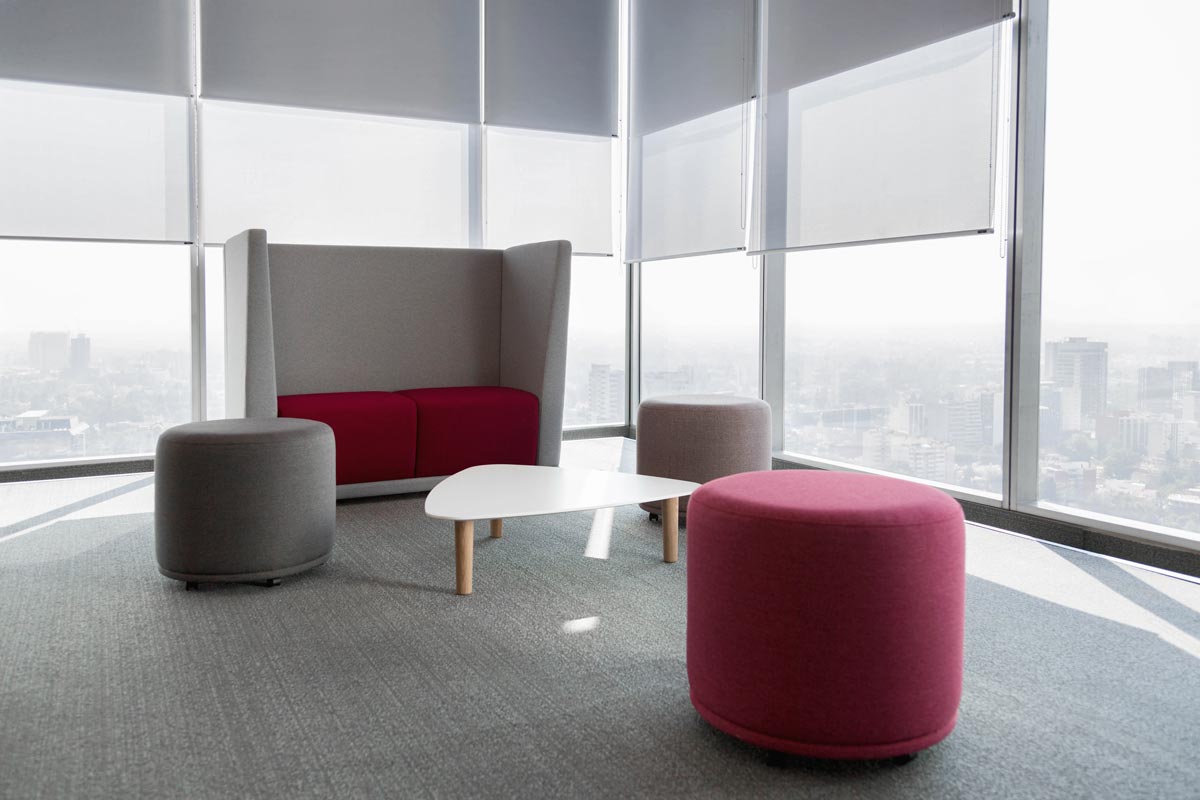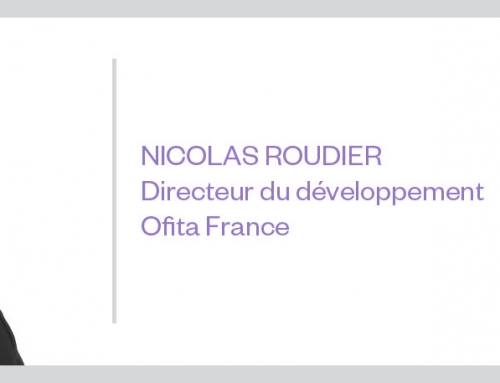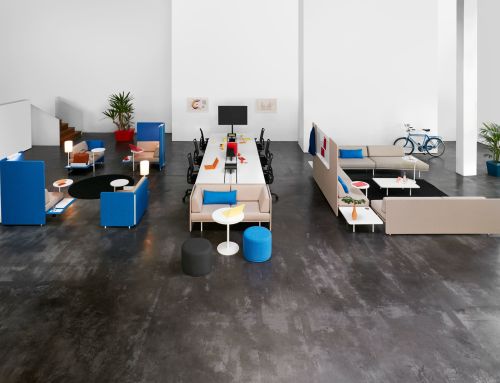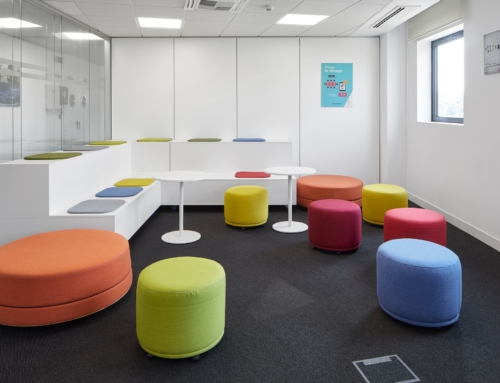The evolution of working spaces
Many are the changes in the design of offices required by the VUCA World and its new workers; in order to summarize them, we can list as the three main trends in the design of working spaces:
- The greater importance of collective spaces.
- The evolution of personal workstations to a broad array of shared spaces.
- The humanization and approach to the home setting both in the design of the space and in its equipment.
Regarding the furniture used, we may highlight five trends: flexibility, personalization, mobility, comfort and adaptability to allow the simple transformation of workstations and with the lowest cost possible.
- The greater importance of collective spaces
Thanks to new technologies and to the different organizational methods of companies, the purpose of offices is changing: fewer and fewer people need offices on a daily basis for their work instead they work from other places.
Nevertheless, the role of the office is still relevant given its use as a communication and interaction centre between people. Therefore, according to a MIT (Massachusetts Institute of Technology) study 80% of all innovations are the consequence of interpersonal communication.
This has a clear impact on office spaces which have to increasingly adapt to these new demands. According to a recent study by Ofita, “More than One”, we spend 60% of our working hours in meetings or collaborating with others and 40% of workstations are empty at any time of the day due to remote work, employment flexibility and the boom of collaborative work. Therefore, companies are wasting 40% of building costs which they do not need while meeting or collaboration spaces are swamped.
We can distinguish two types of common areas: team work spaces and informal communication areas. Although differences between these types are often small and certain spaces are used for multiple purposes there are in fact some differences between them:
- Team work spaces
The ever growing practice of working in interdisciplinary groups or in “ad hoc” teams (teams created on a temporary basis to develop a project or solve a specific problem) is increasing the need for this type of spaces.
Team work spaces have to be first and foremost flexible and adaptable in order to evolve according to the needs at any given time (short and sporadic meetings of several people which are combined with more extended periods of working in small groups during the intensive stages of projects).
According to the study “More than one” by Ofita, the main types of meetings are:
- Convention
- Meeting
- Training
- Team
- Express Meetings
- Brainstorming
- Small committees
- Visits
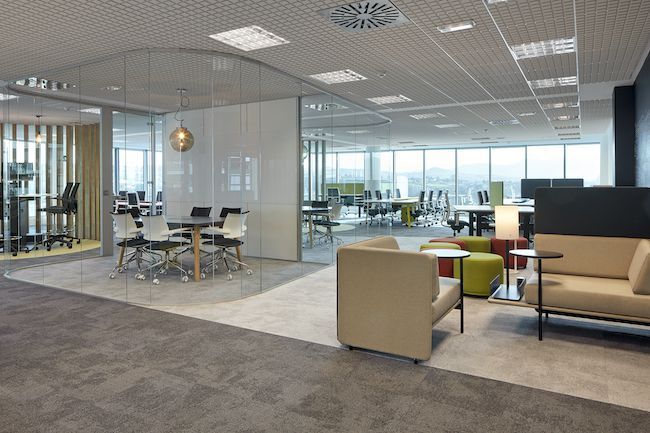
- Informal communication spaces
Informal communication spaces represent the meaning of the working methods in the VUCA world: interaction spaces, informal know-how exchange, fun in the work place and blurred lines between private and professional life. These are without doubt spaces that have undergone a greater boom within offices lately.
So far these areas do not normally form part of what we understood as offices: club areas similar to executive areas of airports, cafes or cyber cafes where it is possible to alternate work and relax or more diverting spaces such as pools, ping pong tables, bowling, cinemas, gyms with saunas, massage rooms, relaxing areas, etc.
Their purpose is to promote communication between employees and increase their living standards in the work place. Moreover, the design and decoration of these spaces represent in several occasions, in a palpably manner, the culture and values of the company.
- The personal workstations evolve to a broad array of shared spaces
As we have already mentioned above, greater flexibility and mobility as well as the increase of team work, increasingly reduce the time at a specific work station (either in the office or not), questioning the traditional ratio 1 worker = 1 work station. It is no good having 2000sqm of offices assigned to employees if their users spend 3/4 parts of the time outside the office or in meeting rooms.
For this reason, companies turn to alternative workstations assigned to employees. These new solutions offer more rational uses of the space, which is designed and distributed depending on the real presence of employees instead of on their absolute number.
Desk-sharing (1 work station shared by various people working in different shifts) was until a couple of years one of the most extended alternatives. It is for example, the system generally used in call centres.
Nevertheless, the trend is evolving towards systems where individual workstations are not only shared as in the desk sharing but where employees have access to a varied choice of working spaces (a pool of working spaces which are not personally assigned but belong to all members of the organization or a department).
Therefore part of the savings obtained from the elimination of personally assigned workstations is increasingly reinvested in an extension of leisure and relax areas and of alternative working and communication spaces, each of them conceived for a specific type of work or work dynamic (work requiring concentration, team work, informal communication, confidentiality, etc.).
It is about the system not about territory. The space is designed according to the needs of employees and not to their status. This system (non-territorial offices) where everything belongs to everyone allows considerable savings of space, grants to the organization greater flexibility and capacity to adapt and grow (breathing organization) and supports mobility of employees, their working methods and their satisfaction.
Despite the above, in our work we all need to use personal and private use objects: documents, agendas, pens, etc., that have to be kept in private. In order to cover this need, each person is provided with a locker or a personal cabinet with wheels “parked” forming batteries in places used for that purpose, for example.
The “choice” of workstations (WS) offered by non-territorial offices will depend on the dynamics of each organization and may include among others:
- Meeting rooms (with its different types already mentioned).
- Concentration WS
- Variable WS
These are workstations in the form of bench desks with variable capacity depending on the number of people and the space requirements.
- “Plug & Work”
Small workstations distributed through different areas of the office and appropriate for the rapid development of work not requiring a high level concentration.
They can be in transit areas, in entrances or in cafes of companies for example.
They are normally prepared for their users to work either standing or seating on stools like in a bar.
- “Silent Room”
They are small enclosed offices designed for individual work requiring concentration or to make confidential calls without the normal nuisances of open spaces.
- Value added areas / informal communication
Common relaxing and resting areas included in the office available for all employees and eventually available for outsiders.
- The humanization and approach to the home setting both in the design of the space and in its equipment
Finally, we are radically redefining the work concept of the employer and the office. We have to assimilate that everything around us is evolving quicker than ever and that only those changing at the same pace as the rest of their environment will still be competitive.
Thus, today’s success is basically based on the capacity of constantly reinventing ourselves and putting it into practice.
Are we ready?
